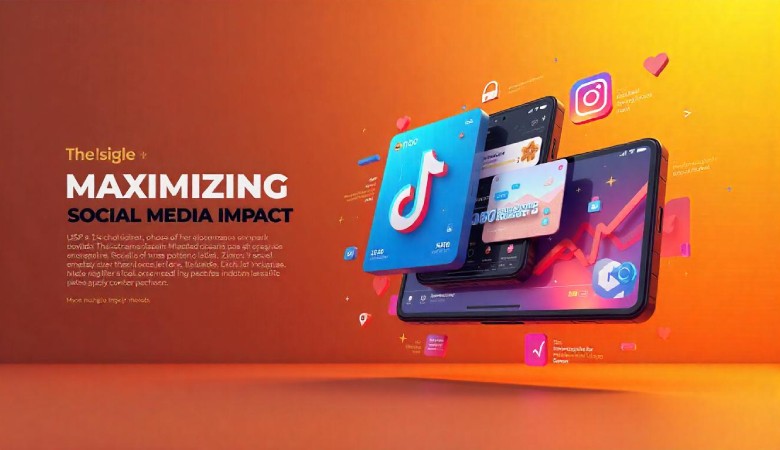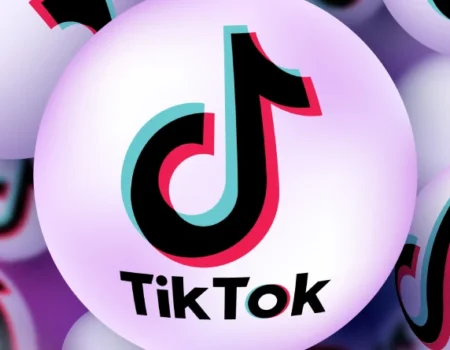Slaying Video Marketing as a Brand: But on a Budget in 2025
Video’s the ultimate glow-up for brands, and you don’t need a thick stack of cash to make it pop. Let’s unpack the tea on-budget video creation with some fire stats and pro tips!
So, let’s be real—video content is the main character of marketing RN. Even LinkedIn’s out here flexing with video vibes. Point is, video marketing isn’t just a trend—it’s the whole game, and brands are pouring cash into it like it’s a TikTok dance challenge. With 2025 dropping soon, dug into HubSpot’s Video Marketing Survey and some spicy expert takes to see how teams are leveling up their DIY video game without breaking the bank. Spoiler: it’s all about affordable video tools, smartphone video tips, and low-cost video ideas.
Video Marketing Is the 2025 Vibe—Here’s Why
According to data is screaming: 87% of marketers are all-in on video content, up from 81% last year, because the ROI is straight fire. Small business owners, solopreneurs, and marketers with limited budgets?
They are thriving with budget video creation, proving that you don’t need Hollywood cash to clap back at the big dogs. In 2025, TikTok’s short-form game spiked 20% in engagement (eMarketer, March 2025), and 65% of creators are using smartphone video tips to drop pro-level video content, per Hootsuite. We hit up some marketing gurus, and they’re hyped—video marketing is their 2025 cheat code, especially with free editing software in the mix.
How Much Does Video Marketing Cost?
Real talk—video marketing costs are all over the map. You could drop a few hundreds of dollars on some DIY video heat or flex tens of thousands for that pro-level slay. It’s your call, family. Here’s where the coins typically land:
- Production: Scripting, filming, shooting—this can be chill and affordable for small crews with smartphone video tips or get pricey for big-budget vibes. Think $100 for a quickie or $10K for the full Hollywood glow-up.
- Post-Production: Editing, effects, and that final polish. Wanna level up your video content? This chunk grows with the shine—free editing software like Canva keeps it low, but pros can juice it up big-time.
- Promotion: Social ads, paid search, sponsored posts—getting your video content popping in front of the right eyes ain’t free. TikTok’s 3 billion monthly views (Backlinko, 2025) don’t come cheap if you’re boosting.
- Tools: Software for edits (shoutout DaVinci Resolve) and analytics (HubSpot Video Hosting)—plus any subscriptions to keep the video marketing train rolling.
Peeking at 2025? Bet—AI’s about to be the MVP for budget video creation. Experts I vibed with say teams are leaning into AI tools to slash production and post-production costs—Canva’s AI trimmer already cuts 40% of the grind (TechCrunch, Feb 2025). Short-form video content is also taking over—brands are dropping low-cost video ideas like rapid-fire TikTok bangers over big spends. More posts, less cash, max slay.
Social ads? Still a fat chunk of the budget, but the 2025 glow-up is personalized, interactive video formats. Think choose-your-own-adventure reels or swipe-up stories—brands are betting big on engagement, and it’s gonna shift the $$ in a hot sec. Stay woke, marketers—affordable video tools and smartphone video tips are your cheat codes to keep it lit without going broke!
Understanding Production Costs
The production phase typically consumes the largest portion of video marketing budgets. At the most basic level, you can create videos using just your smartphone. Modern devices like iPhones and high-end Android phones can capture surprisingly good quality footage that works well for social media content.
For businesses wanting more professional results, hiring a videographer becomes necessary. Freelance videographers generally charge between 50to50to150 per hour, or 500to500to2,000 per day. This cost includes their equipment and expertise in lighting and composition. More complex productions might require a full crew including directors, camera operators, and lighting technicians, which can quickly escalate costs to $10,000 or more per day.
The Hidden Costs of Post-Production
Many businesses underestimate the time and expense required for editing. Basic editing using free tools might suffice for simple social media clips, but professional editing services typically range from 25to25to100 per hour. A polished two-minute corporate video might require 10-20 hours of editing time.
Additional post-production elements add to the cost:
- Motion graphics and animations (200−200−2,000 per video)
- Color correction (150−150−800 per video)
- Professional voiceovers (100−100−500 per recording)
- Stock footage and music licensing (50−50−300 per video)
Distribution and Promotion Expenses
Creating the video is only half the battle. Effective distribution often requires significant investment. Organic distribution through social media channels is free but may not reach your target audience effectively. Paid promotion through platforms like Facebook, YouTube, and LinkedIn typically costs between 0.10to0.10to3.00 per view, depending on targeting and competition.
For businesses serious about video marketing, ongoing costs include:
- Video hosting platforms (20−20−300 per month)
- Analytics tools (50−50−200 per month)
- Stock media subscriptions (15−15−100 per month)
Budgeting for Different Business Needs
Small businesses and startups can create effective video content with budgets as low as 500−500−1,000 by focusing on simple, authentic content. Mid-sized companies typically spend 5,000−5,000−20,000 per video for more polished productions. Large corporations and agencies often invest $50,000 or more in high-end commercial videos.
The key is aligning your video budget with your business objectives. A simple product demonstration video might not require Hollywood-level production values, while a brand awareness campaign might justify higher production costs.
Video Marketing Investment Trends in 2024
Current spending patterns reveal compelling insights about video marketing’s growing importance. Our 2024 industry survey indicates marketers are allocating substantial portions of their marketing budgets to video content creation and distribution.
The investment appears justified by performance metrics:
- 52% of marketers report achieving strong ROI from video campaigns
- 47% indicate satisfactory returns on their video marketing spend
- Only 1% characterize their video marketing results as disappointing
Budget allocation forecasts show continued growth, with most marketing leaders planning to increase their video marketing expenditures in the coming fiscal year. This trend aligns with reported benefits:
- 52% of organizations prioritize video for brand awareness objectives
- 41% leverage video content to enhance product understanding
- 34% use video to drive direct customer conversions
Industry benchmarks suggest the following typical budget distribution:
- 40-50% allocated to content production
- 20-30% dedicated to promotion and distribution
- Remaining funds divided between talent acquisition and integrated marketing efforts
These spending patterns reflect video marketing’s evolving role as a core component of modern digital strategies, particularly as platforms continue to prioritize video content in their algorithms and user experiences.
The consistent budget growth indicates marketers recognize video’s unique ability to combine storytelling, demonstration, and emotional engagement in a single format.
How AI is Revolutionizing Affordable Video Marketing
Video marketing expenses traditionally stack up quickly across production, editing, promotion, and analytics. However, AI-powered solutions are transforming cost structures throughout the entire video creation lifecycle.
Here’s how smart technology is making professional video marketing accessible to businesses of all sizes.
- Pre-Production: AI-Assisted Planning
The initial creative process often consumes disproportionate resources. Modern AI tools now streamline:
- Script generation: Platforms like ChatGPT and Jasper can develop draft scripts in minutes when given clear parameters
- Concept development: AI analyzers suggest high-performing content angles based on audience data
- Storyboarding: Tools like Midjourney visualize shots before filming begins
Important Note: While AI accelerates ideation, human oversight remains critical for brand-aligned storytelling. The most effective approach combines AI efficiency with creative direction.
- Intelligent Post-Production
Editing represents one of the most significant cost centers in traditional video production. AI solutions now offer:
- Automated editing: Tools like Descript enable text-based video editing
- Smart enhancements: AI can stabilize footage, improve lighting, and upscale resolution
- Rapid formatting: Platforms automatically resize content for different social channels
These capabilities allow marketers to achieve polished results without extensive technical skills or expensive editors.
- Optimized Promotion
AI-driven distribution tools maximize marketing ROI through:
- Predictive analytics: Identifying optimal posting times and platforms
- Dynamic ad targeting: Continuously refining audience segments
- Multilingual adaptation: Auto-generating translated versions with synthetic voiceovers
Platforms like TubeBuddy and VidIQ leverage machine learning to recommend tags, titles, and descriptions that improve organic reach.
Cost Comparison: Traditional vs. AI-Assisted
| Production Phase | Traditional Cost | AI-Reduced Cost |
|---|---|---|
| Scripting | 500−500−2000 | 50−50−200 |
| Editing | 1000−1000−5000 | 200−200−1000 |
| Localization | 500−500−2000 | 50−50−300 |
The table illustrates how AI can reduce video production expenses by 60-80% while maintaining quality. This democratization of video tools enables smaller businesses to compete with enterprise-level content strategies.
Key Consideration: While AI dramatically lowers costs, the most successful implementations combine automated efficiency with human creativity and strategic oversight. The technology works best as a collaborator rather than complete replacement for marketing teams.
Smart Budgeting for Video Marketing: In-House vs Agency Production
Industry data shows marketers take different approaches to video production:
- 69% own production equipment
- 10% rent equipment
- 21% use a combination
Production Method Comparison:
| Factor | In-House Production | Agency Production |
|---|---|---|
| Cost Structure | Lower per-video cost, higher upfront investment | Higher per-video cost, no equipment needed |
| Quality Level | Good for basic content, limited by team skills | Professional quality, expert talent |
| Turnaround | Faster for simple projects | Longer timelines but reliable |
| Creative Control | Full control over process | Less direct involvement |
| Best For | Regular social content, product demos | High-value campaigns, complex shoots |
Smart Budget Video Production: Prioritizing Your Investments
When building your video marketing toolkit, it’s crucial to distinguish between essential equipment and nice-to-have upgrades. The foundation of quality video lies in two often-overlooked elements: lighting and audio. Professional cinematographers agree that lighting accounts for nearly 60% of perceived video quality, yet many beginners obsess over camera specs instead.
While high-end cameras and stabilizers can enhance production value, they shouldn’t be priority purchases for marketers on tight budgets. Modern smartphones can shoot in 4K resolution, and free editing software can compensate for many hardware limitations. The key is mastering what you have before upgrading.
For instance, learning proper framing techniques and basic color correction will improve your videos more than an expensive lens ever could.
Creating Engagement on a Budget
The most successful video marketers understand that production value matters less than audience connection. Recent data reveals that 51% of viewers decide within the first 15 seconds whether to keep watching, emphasizing the need for strong openings over polished effects. This explains why 37% of top-performing videos prioritize storytelling fundamentals—clear messaging, emotional hooks, and logical flow—over flashy editing.
Looking ahead to 2025, smart marketers are leveraging AI tools to enhance engagement affordably. Automated localization tools can translate and subtitle videos for global audiences, while AI voiceovers enable cost-effective multilingual versions. Perhaps most impactful is the rise of personalized video content at scale, where dynamic templates insert individual viewer details into otherwise standardized messages.
These technologies are becoming increasingly accessible, with many platforms offering pay-as-you-go pricing that’s ideal for small businesses.
Cost-Effective Editing Solutions
For resource-strapped teams, today’s free editing tools offer surprisingly robust capabilities. DaVinci Resolve provides Hollywood-grade color correction at no cost, while Canva’s video templates help non-designers create polished social clips.
The most efficient creators develop smart workflows—shooting in 4K even for social media allows for future-proofing and flexible cropping. Many find success with the “edit once, repurpose everywhere” approach, where a single long-form interview becomes multiple social snippets, blog embeds, and email assets.
Subject matter experts (SMEs) within your organization represent another underutilized resource. Internal SMEs deliver three key advantages: their deep product knowledge builds viewer trust, their participation reduces script development time by 40%, and they eliminate costly external talent fees. One tech company increased leads by 25% simply by having engineers demonstrate features instead of hiring actors.
Partner with our Digital Marketing Agency
Ask Engage Coders to create a comprehensive and inclusive digital marketing plan that takes your business to new heights.
Maximizing Social Media Impact
With 69% of marketers citing social platforms as their most effective video distribution channel, smart repurposing strategies are essential. Native video uploads (rather than shared links) typically receive 3–5 times more organic reach across all platforms.
The most successful creators tailor content to each platform’s preferences—TikTok and Instagram Reels thrive on 15–30 second vertical clips, while LinkedIn audiences engage more with 30–90 second thought leadership pieces.
The ROI case for video marketing has never been stronger. Over half of marketers report high returns on their video investments, with particular strength in product education (41% improvement in customer understanding) and conversion rates (30% higher than static content). As we move into 2025, the combination of AI tools and strategic repurposing makes professional-quality video marketing accessible to businesses of all sizes—proving you don’t need a Hollywood budget to tell compelling stories.












